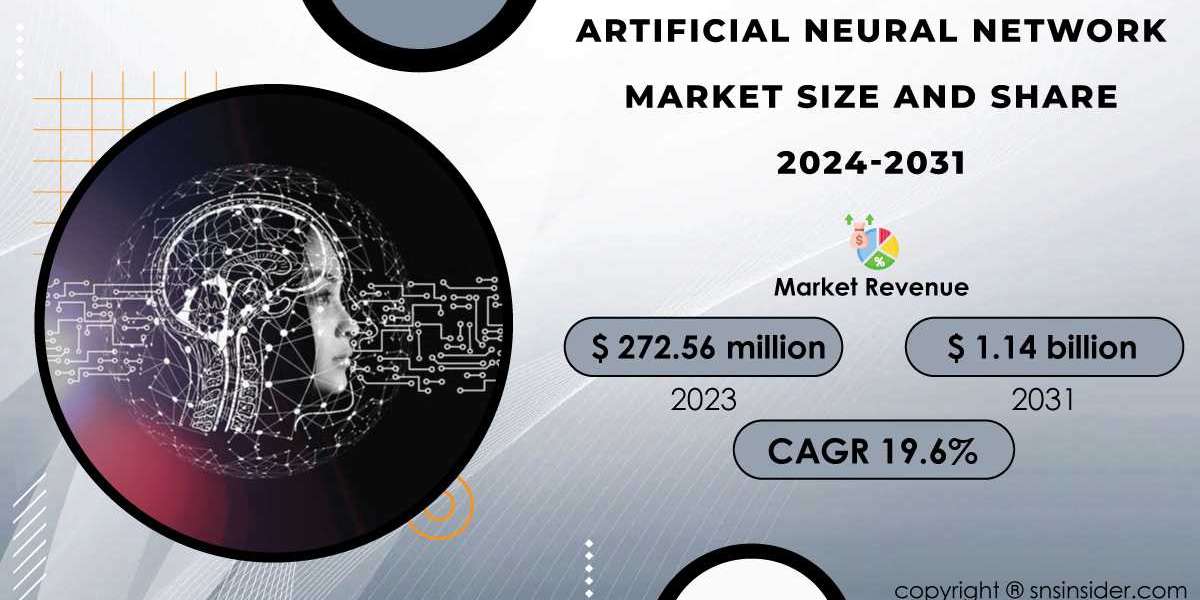Artificial Neural Network 2024
Artificial Neural Networks (ANNs) are a key component of machine learning and artificial intelligence (AI) systems that mimic the way the human brain works to process and interpret data. They are designed to recognize patterns and solve complex problems, making them a powerful tool for a wide range of applications, from image recognition to natural language processing. Artificial Neural Network Market Trends show that the increasing demand for automation, data analysis, and AI-driven solutions is driving the rapid growth of the ANN industry across sectors such as healthcare, finance, and autonomous systems.
Artificial Neural Network Market was valued at USD 248 million in 2023 and is expected to reach USD 1256 million by 2032, growing at a CAGR of 19.79% over the forecast period of 2024-2032.
How Artificial Neural Networks Work
At their core, Artificial Neural Networks are composed of layers of interconnected nodes, also known as neurons, which process information in a manner similar to the human brain. Each node is a simple computational unit that receives input, processes it using mathematical algorithms, and produces an output. These nodes are organized into layers: an input layer, one or more hidden layers, and an output layer.
The input layer receives raw data, which is then passed through the hidden layers where various mathematical functions are applied to extract features and patterns. The output layer produces the final result, which could be a classification label, a prediction, or a recommendation. The network "learns" by adjusting the weights of connections between nodes based on the errors in its predictions, which is done through a process called backpropagation. This iterative learning process enables the network to improve its accuracy over time.
Applications of Artificial Neural Networks
Artificial Neural Networks are highly versatile and are employed in a broad array of applications. In the field of healthcare, ANNs are used to analyze medical images, detect anomalies, and assist in diagnosis. For example, they can be trained to identify patterns in MRI scans or X-rays, helping radiologists identify conditions such as tumors or fractures. Similarly, ANNs play a critical role in drug discovery by analyzing biological data and predicting potential drug interactions.
In finance, ANNs are used for fraud detection, credit scoring, and algorithmic trading. Their ability to process vast amounts of data and identify hidden patterns makes them invaluable for detecting fraudulent transactions or assessing credit risk. The banking sector also uses ANNs to automate customer service with chatbots and other AI-driven tools, enhancing user experience and operational efficiency.
Artificial Neural Networks have also gained significant traction in the automotive and transportation industries, where they are integral to the development of autonomous vehicles. By processing sensor data from cameras, radar, and LIDAR systems, ANNs enable self-driving cars to recognize objects, predict potential hazards, and make real-time decisions, paving the way for safer and more efficient transportation systems.
Advancements Driving the Growth of ANNs
The rapid growth of Artificial Neural Networks can be attributed to advancements in computational power, big data, and algorithms. With the advent of powerful GPUs and cloud computing, training ANNs on large datasets has become more feasible, even for smaller companies and organizations. Additionally, the availability of vast amounts of data from sources such as social media, sensors, and IoT devices has provided ANNs with the inputs needed to improve their learning and accuracy.
Deep learning, a subset of machine learning that uses multi-layered neural networks, has seen tremendous progress in recent years, enabling more complex and accurate models. This has led to breakthroughs in areas such as speech recognition, language translation, and image generation, further driving the demand for ANNs.
Challenges and Future Outlook
Despite the many advantages of Artificial Neural Networks, they are not without challenges. One of the major hurdles is the need for large amounts of labeled data to train the networks effectively. Collecting and labeling such data can be time-consuming and expensive. Additionally, ANNs are often seen as "black boxes" because their decision-making process is not always transparent, which can be a problem in critical applications like healthcare or finance where explainability is important.
Furthermore, training deep neural networks requires significant computational resources, which can be costly and environmentally taxing due to high energy consumption. As the field evolves, researchers are focusing on making ANNs more efficient, interpretable, and capable of learning from smaller datasets.
Looking ahead, the future of Artificial Neural Networks appears bright. As advancements in AI, machine learning, and hardware continue to progress, the scope and impact of ANNs are expected to expand. From enabling more sophisticated autonomous systems to improving decision-making in industries such as healthcare, finance, and manufacturing, ANNs are set to play an increasingly pivotal role in shaping the future of technology.
Conclusion
Artificial Neural Networks are transforming industries across the globe, from automating processes and enhancing decision-making to creating innovative solutions in healthcare, finance, and beyond. As they continue to evolve and improve, ANNs will likely become even more powerful, accurate, and integral to various technologies and applications. With their growing importance and rapid market growth, Artificial Neural Networks are poised to play a crucial role in shaping the future of AI and machine learning.
Contact Us:
Akash Anand – Head of Business Development Strategy
info@snsinsider.com
Phone: +1-415-230-0044 (US) | +91-7798602273 (IND)
About Us
SS Insider is one of the leading market research and consulting agencies that dominates the market research industry globally. Our company's aim is to give clients the knowledge they require in order to function in changing circumstances. In order to give you current, accurate market data, consumer insights, and opinions so that you can make decisions with confidence, we employ a variety of techniques, including surveys, video talks, and focus groups around the world.
Read Our Other Reports:
Software Defined Data Center Market Share














